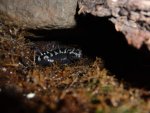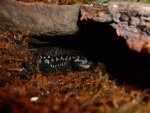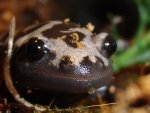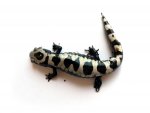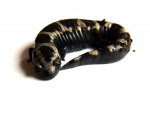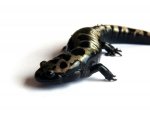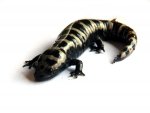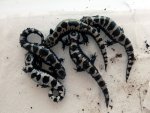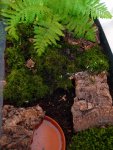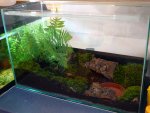froggy
Site Contributor
- Joined
- Nov 8, 2002
- Messages
- 1,779
- Reaction score
- 28
- Points
- 48
- Age
- 35
- Location
- Manchester, England
- Country
- United Kingdom
- Display Name
- Chris Michaels
Any updates on anyone's opacum? Mine are still doing well. I have let them get reasonably warm, following Justin's success with this species - up to about 24 air temp (a bit cooler under the bark). I've been watching closely and they are still feeding and looking OK. Their water dish is all but dried up now; I may add a little bit more mud to the bottom of it so it is a bit more natural. There is some there now, but I think it will dry out completely, rather than staying damp.
Does anyone else's animals ever move? Mine spend all their time under one hide, apart form when they decide to move hide. I have checked at night, too, and they never come out. I've heard this is normal, but was wondering what others had found. This is in a tank with plenty of moss and bark, so they shouldn't feel exposed. I hope they will get the idea of where the water dish is in the Autumn if they do get it together and breed. I would like to get another animal or two, if I can track any down, and move them to a really useful box as a larger enclosure, but we'll see. On the other had, I don't want to disturb them by moving them again.
Does anyone else's animals ever move? Mine spend all their time under one hide, apart form when they decide to move hide. I have checked at night, too, and they never come out. I've heard this is normal, but was wondering what others had found. This is in a tank with plenty of moss and bark, so they shouldn't feel exposed. I hope they will get the idea of where the water dish is in the Autumn if they do get it together and breed. I would like to get another animal or two, if I can track any down, and move them to a really useful box as a larger enclosure, but we'll see. On the other had, I don't want to disturb them by moving them again.

